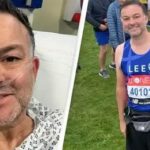Josephine Myrtle Corbin was born on May 12, 1868, in Tennessee, USA, with a rare condition called dipygus syndrome.
This condition caused her lower body to develop in two parts, giving her four legs instead of two. Despite this unusual physical feature, Josephine’s life story is one of strength, determination, and resilience.

A Unique Anatomy
Josephine’s body was a medical marvel. She had two pelvic bones and four legs—two fully developed outer legs and two shorter, underdeveloped inner legs with three toes each.
She also had two reproductive systems and two anuses. Her inner legs were movable but too weak to walk on, so she relied on her outer legs for mobility. Custom-made clothes helped her live more comfortably.

Rising to Fame
At age 13, Josephine began performing as a sideshow attraction. Known as “The Four-Legged Girl from Texas,” she quickly became famous. Her father promoted her as having a cheerful and kind personality, which drew even more attention.
Josephine toured with P.T. Barnum’s circus and other shows, earning around $450 a week at the height of her career—a significant amount at the time. She traveled to many cities, captivating audiences with her charm and unique story.
A Family Life
At 19, Josephine retired from performing and married Dr. Clinton Bicknell. Although doctors were unsure if she could have children, she gave birth to five. Occasionally, she returned to performing to support her family financially. She and her husband lived a quiet life in Texas, where Josephine embraced her roles as a wife and mother.

Final Years and Legacy
Josephine passed away in 1928 from a streptococcal skin infection. She was buried in Cleburne Memorial Park Cemetery in Texas. Her life continues to fascinate people, especially in medical studies, as her condition was extremely rare.
Lessons from Her Life
Josephine’s life teaches important lessons:
1. Resilience: She overcame physical challenges and thrived.
2. Embracing Differences: She turned her uniqueness into a source of strength and success.
3. Love Beyond Limits: Her family life shows that love isn’t limited by physical differences.
4. Inspiring Others: Her story motivates others to embrace their own uniqueness.
5. Compassion: Her life encourages acceptance and understanding of differences.


